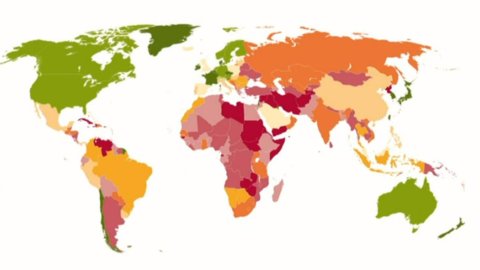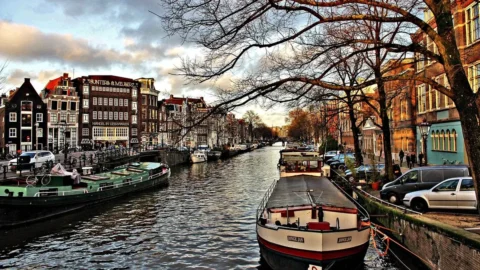A map of risk, which is also a map of opportunities. With the same colors (roughly) that we are used to seeing assigned to the Italian regions, depending on the level of risk and the restrictive measures, namely red, yellow and green (or rather green). To paint the Risk Map of Italian exports in 2021 is Sace, the group of Cassa depositi e prestiti that deals with supporting Italian companies on international markets. So red, yellow and in this case green become, in Sace's work, the colors of risk but also of the sustainable recovery of the Italian economy in this 2021 which will still be very complicated and marked by the pandemic.
The current year, according to Sace's analysis, will be marked by V-factors: viruses, vaccines and variants: “But we are able to perceive an optimism, albeit cautious – explained Alessandro Terzulli, chief economist of Sace -. The recovery will be widespread geographically, but in a heterogeneous way and will take place above all in the second half of the year, thanks to the diffusion of vaccines. The particular resilience of Asia should be noted, even if there are still many unknown factors and the social impacts of the crisis and growing political tensions must be considered". An analysis shared and strengthened also by Atradius, the trade credit insurance company, which sees a 5% recovery in global GDP in 2021 and a 7-8% growth in trade with uncertainties remaining in the short term but with underlying cautious optimism. In this scenario, 2021 still promises to be a year of transition towards the exit from the health emergency, and also as the year of the ecological transition, whose color, green, corresponds to that of the lowest risk in the Risk Map.
In the map, green appears naturally in Western countries, but with various shades and not everywhere. In general, the credit risk will increase, linked to the increase in public debts, even if Sace notes that the credit profile of advanced countries, although in decline, has not recorded an excessive deterioration. Green light therefore for the USA, Canada, Germany, France, Australia, New Zealand, Japan, Holland, Ireland, the Scandinavian countries and also for Chile, the only South American country not to be in the yellow or even red "zone". Mediterranean Europe is more risky, including Italy, while following the uncertainty
resulting from the exit from the common European market, the United Kingdom also leaves the green zone.
Sub-Saharan Africa is confirmed as the red zone par excellence, but also several countries in North Africa and the Middle East (this area recorded the worst drop in GDP since the 80s), Latin America (in addition to Chile, partly Peru, Argentina and Uruguay, while Brazil and Mexico will be very risky), and as usual Asia is very heterogeneous: China has already restarted and offers good opportunities, as does South Korea, while Thailand and India are to be avoided according to Sace's assessments.
Interesting too the map relating to the risk of political violence, which according to Sace is closely linked to the trend of inequalities and which sees only advanced countries (apart from the United States and Cyprus, which are in the yellow zone) and Costa Rica in the green zone. Dark red light for Mozambique and Lebanon, and strong risks of tensions in various Asian, South American and African countries.
“One year after the declaration of the state of pandemic – he commented the president of Sace Rodolfo Error -, the map gives us a completely new snapshot of the world. The restart for Italian companies will be promoted by some important drivers. First of all, exports, which have always been a fundamental engine of our economy, will certainly be a lever to be activated. But alone it will not be enough to hook the recovery. It will also be useful to focus on expansionary economic policies; on the implementation of the Next Generation EU plan; on a global financial system focused on financing the real economy and on an ambitious green agenda, all of this in an inclusive logic at the service of the generations to come”.
“Resilience, innovation and sustainability – he added the CEO of Sace Pierfrancesco Latini -: these are the terrains on which the challenge of recovery will be played out to re-launch the competitiveness of Italy and of our businesses. A challenge in which SACE has been called upon to play a leading role in supporting the Italian entrepreneurial and productive fabric, with its guarantees and insurance coverage, to contribute to the economic recovery of the country. We will do it with the utmost commitment, in a team game, which sees us all oriented - institutions, finance and businesses - towards a single goal: the restart."





